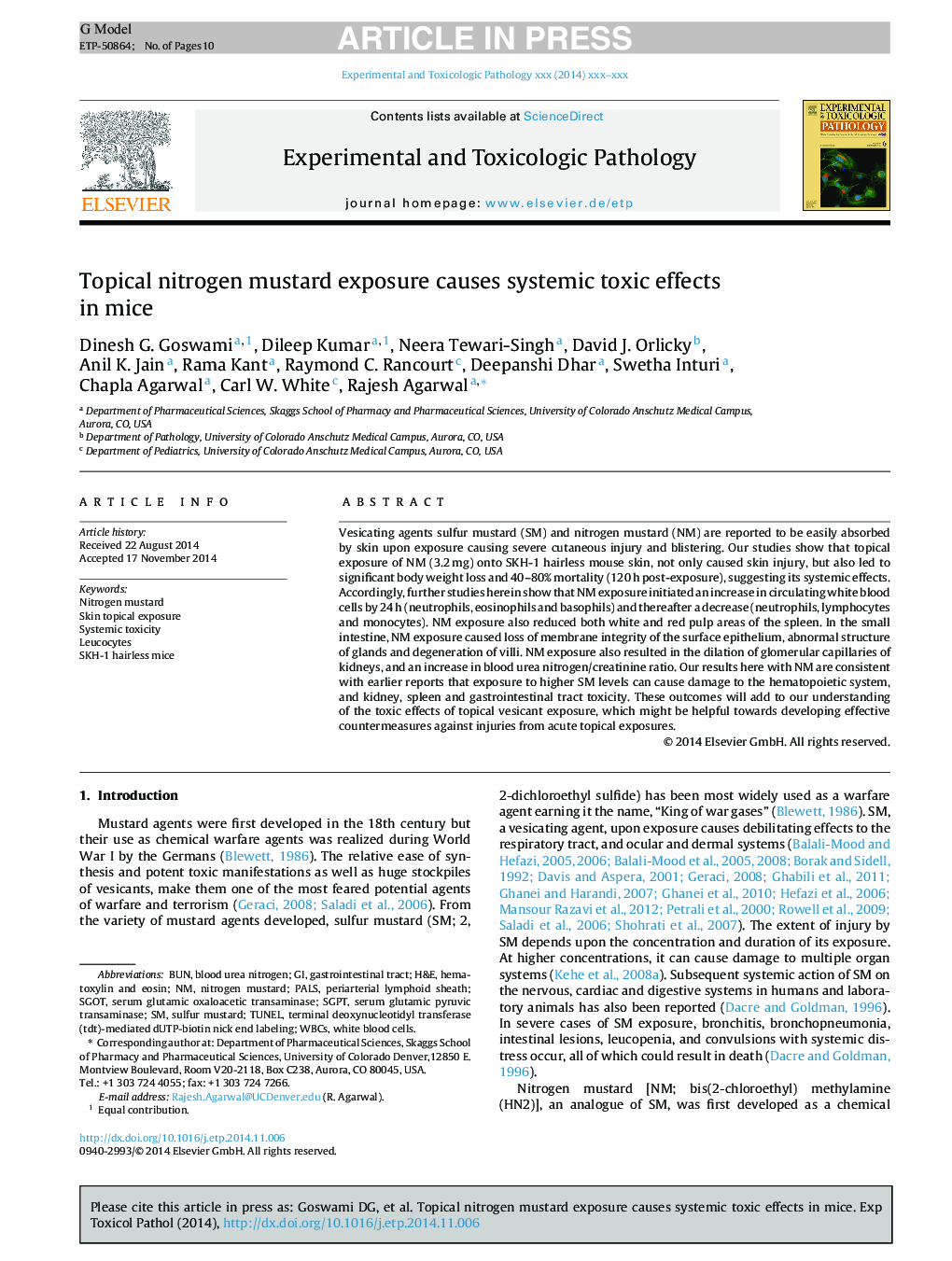| کد مقاله | کد نشریه | سال انتشار | مقاله انگلیسی | نسخه تمام متن |
|---|---|---|---|---|
| 5817054 | 1116465 | 2015 | 10 صفحه PDF | دانلود رایگان |
عنوان انگلیسی مقاله ISI
Topical nitrogen mustard exposure causes systemic toxic effects in mice
ترجمه فارسی عنوان
قرار گرفتن در معرض نوشیدنی خردل موضعی باعث ایجاد اثرات سمی سیستمیک در موش می شود
دانلود مقاله + سفارش ترجمه
دانلود مقاله ISI انگلیسی
رایگان برای ایرانیان
کلمات کلیدی
WBCsSGPTSGOTSKH-1 hairless miceH&E - H & ESerum glutamic oxaloacetic transaminase - ترانس آمیناز اگزوالکتیک گلوتامین سرمserum glutamic pyruvic transaminase - ترانس آمیناز پریوویک گلوتامین سرمTUNEL - تونلNitrogen mustard - خردل نیتروژنBUN - خوبGastrointestinal tract - دستگاه گوارشSystemic toxicity - سمیت سیستمیکSulfur mustard - سولفور موستارد یا گاز خردلLeucocytes - لکوسیت هاblood urea nitrogen - نیتروژن اوره خونHematoxylin and Eosin - هماتوکسیلین و ائوزینPALS - پالسwhite blood cells - گلبول های سفید خون
موضوعات مرتبط
علوم زیستی و بیوفناوری
علوم کشاورزی و بیولوژیک
علوم دامی و جانورشناسی
چکیده انگلیسی
Vesicating agents sulfur mustard (SM) and nitrogen mustard (NM) are reported to be easily absorbed by skin upon exposure causing severe cutaneous injury and blistering. Our studies show that topical exposure of NM (3.2Â mg) onto SKH-1 hairless mouse skin, not only caused skin injury, but also led to significant body weight loss and 40-80% mortality (120Â h post-exposure), suggesting its systemic effects. Accordingly, further studies herein show that NM exposure initiated an increase in circulating white blood cells by 24Â h (neutrophils, eosinophils and basophils) and thereafter a decrease (neutrophils, lymphocytes and monocytes). NM exposure also reduced both white and red pulp areas of the spleen. In the small intestine, NM exposure caused loss of membrane integrity of the surface epithelium, abnormal structure of glands and degeneration of villi. NM exposure also resulted in the dilation of glomerular capillaries of kidneys, and an increase in blood urea nitrogen/creatinine ratio. Our results here with NM are consistent with earlier reports that exposure to higher SM levels can cause damage to the hematopoietic system, and kidney, spleen and gastrointestinal tract toxicity. These outcomes will add to our understanding of the toxic effects of topical vesicant exposure, which might be helpful towards developing effective countermeasures against injuries from acute topical exposures.
ناشر
Database: Elsevier - ScienceDirect (ساینس دایرکت)
Journal: Experimental and Toxicologic Pathology - Volume 67, Issue 2, February 2015, Pages 161-170
Journal: Experimental and Toxicologic Pathology - Volume 67, Issue 2, February 2015, Pages 161-170
نویسندگان
Dinesh G. Goswami, Dileep Kumar, Neera Tewari-Singh, David J. Orlicky, Anil K. Jain, Rama Kant, Raymond C. Rancourt, Deepanshi Dhar, Swetha Inturi, Chapla Agarwal, Carl W. White, Rajesh Agarwal,
